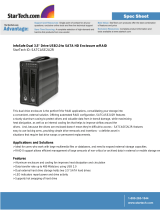
4
4.4.1
Physical disk...........................................................................................................54
4.4.2 RAID group............................................................................................................57
4.4.3 Virtual disk.............................................................................................................60
4.4.4 Snapshot................................................................................................................65
4.4.5 Logical unit.............................................................................................................68
4.4.6 Example.................................................................................................................69
4.5 Enclosure management ...............................................................74
4.5.1 Hardware monitor..................................................................................................75
4.5.2 UPS ........................................................................................................................76
4.5.3 SES.........................................................................................................................78
4.5.4 Hard drive S.M.A.R.T. ............................................................................................78
4.6 System maintenance....................................................................79
4.6.1 System information................................................................................................79
4.6.2 Event log................................................................................................................80
4.6.3 Upgrade.................................................................................................................82
4.6.4 Firmware synchronization ......................................................................................82
4.6.5 Reset to factory default..........................................................................................83
4.6.6 Import and export..................................................................................................83
4.6.7 Reboot and shutdown............................................................................................84
4.7 Home/Logout/Mute......................................................................84
4.7.1 Home .....................................................................................................................84
4.7.2 Logout....................................................................................................................84
4.7.3 Mute.......................................................................................................................85
Chapter 5 Advanced operations...........................................86
5.1 Volume rebuild.............................................................................86
5.2 RG migration................................................................................88
5.3 VD extension................................................................................89
5.4 Snapshot......................................................................................89
5.4.1 Create snapshot volume.........................................................................................90
5.4.2 Auto snapshot........................................................................................................91
5.4.3 Rollback..................................................................................................................92
5.4.4 Snapshot constraint ...............................................................................................93
5.5 Disk roaming................................................................................95
5.6 VD clone ......................................................................................95
5.7 SAS JBOD expansion..................................................................103
5.7.1 Connecting JBOD .................................................................................................103
5.7.2 Upgrade firmware of JBOD ..................................................................................105
5.8 MPIO and MC/S .........................................................................106
5.9 Trunking and LACP ....................................................................108
5.10 Dual controllers (only for DSN-6420).........................................109
5.10.1 Perform I/O..........................................................................................................109
5.10.2 Ownership............................................................................................................110
5.10.3 Controller status...................................................................................................111
5.11 Replication.................................................................................112
5.12 VLAN..........................................................................................122
Chapter 6 Troubleshooting .................................................125
6.1 System buzzer............................................................................125




















